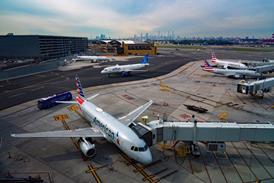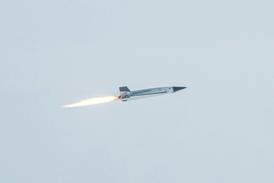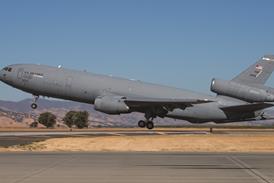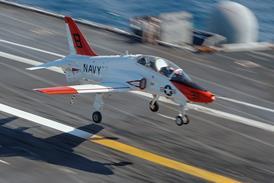A June 2008 uncommanded pitch-up of a Boeing 737-400 operated by Tailwind Airlines has resulted in five recommendations by the US National Transportation Safety Board to the Federal Aviation Administration focusing on elevator system redesign for 737-300/400/500 models.
The aircraft, registration number TC-TLA, experienced the pitch-up 20ft (6m) above the ground on approach to Diyarbakir airport in Turkey.
The NTSB says that the flightcrew performed a go-around and controlled the aircraft's pitch with significant column force, full nose-down stabiliser trim and thrust.
During the second approach the crew controlled the aircraft and landed by using forceful control column inputs to maintain pitch control, and sustained injuries during the go-around.
The NTSB determined the incident was caused by foreign object debris, a metal roller element from an elevator bearing, that jammed the power control unit on the left elevator.
 |
|---|
© HAMFive/AirTeamImages.com |
"During its investigation of this incident, the NTSB identified safety issues relating to the protection of the elevator [power control unit] input arm assembly, design of the 737 elevator control system, guidance and training for the 737 flight crews on a jammed elevator control system and upset recovery training," it says.
Its five recommendations focus on those concerns. The NTSB has asked the FAA to require Boeing to develop a method to protect the elevator power control unit from foreign object debris, and mandate that operators modify their aircraft with that method of protection.
The NTSB also believes a redesign of the -300-500 series elevator system to prevent a single point jam from restricting the movement of the system is necessary and that operators should be required to implement the new design.
The board points out that no override mechanism existed on the incident aircraft, and while the pilots exerted enough force on the control columns to override the jam, the NTSB is "concerned that other jam scenarios may exist in which pilot inputs would not be enough to successfully control the airplane".
The board also believes Boeing needs to develop recovery strategies - checklists or memory items - for 737 models lacking a mechanical override for a jammed elevator in the event of a full control deflection of the elevator system.
The Tailwind flightcrew did not have time to reference the 737 flightcrew operations manual or the quick reference handbook, the NTSB says, and its review revealed no checklists or procedures from uncommanded elevator deflection or a jammed elevator control system in the manual.
Additionally, the NTSB says that the flight data recorder from the aircraft indicated that once the flightcrew re-established minimum control over the pitching tendency, they turned off the hydraulic power to the flight controls.
"By turning off the hydraulic power during the go-around manoeuvre, the flightcrew adversely affected the airplane's controllability," says the NTSB.
As a result, its final recommendation is within the recovery strategies it believes Boeing should develop, and that the consequences of removing all hydraulic power to aircraft as a response to any uncommanded control surface should be clarified.
Source: Flight International


























